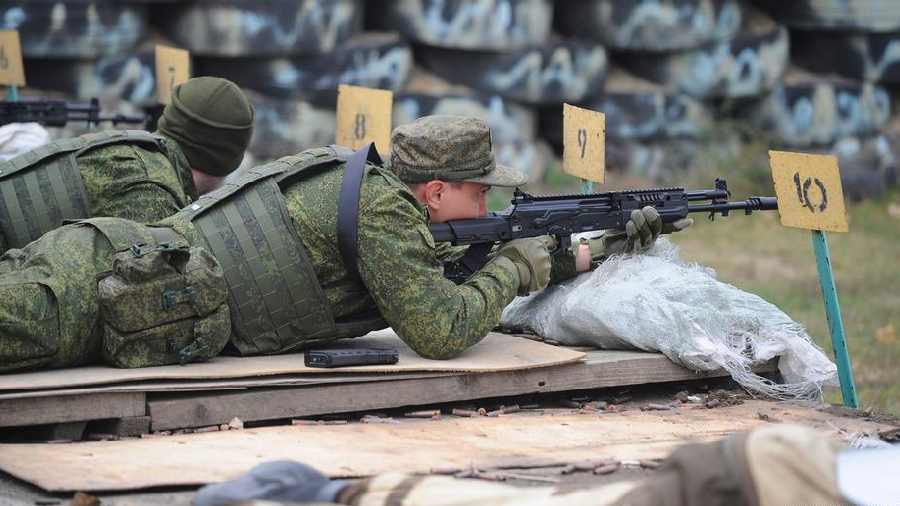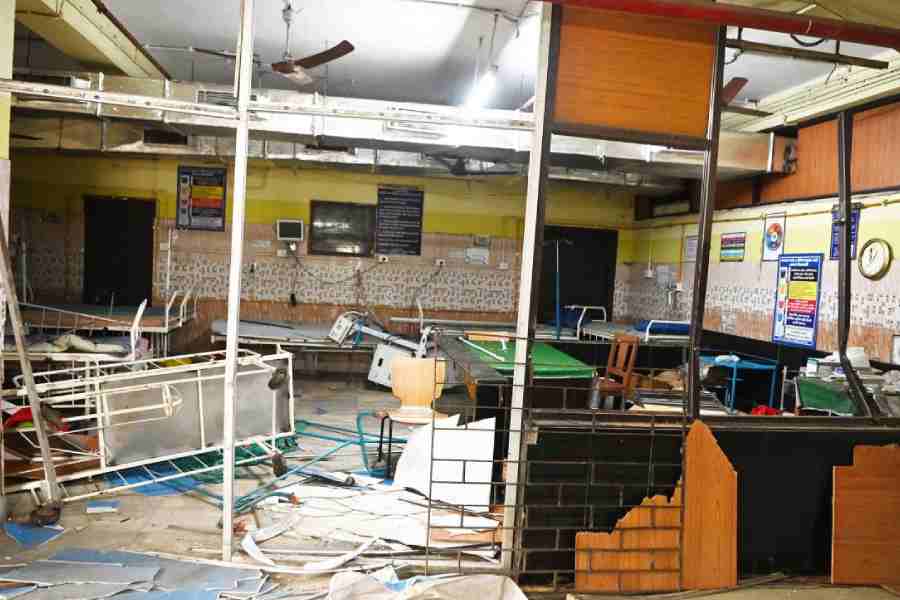On a snowbound field, three Soviet-era helicopters were being readied for battle. Pilots and crew checked the flight plan for their next target, while technicians loaded slim gray rockets into launcher pods and stacked flares into racks behind the exhaust.
One year into the war, against all the odds, Ukraine’s helicopter brigades are still operational. Every day of the week, multiple times a day, they go into battle against enemy forces, launching rocket attacks along the front lines in support of ground troops and occasionally slipping under Russian air defences to fly covert missions into enemy territory.
Far from being knocked out in the first days of the invasion, Ukraine’s helicopters and jets have kept flying, remaining an inspiring and useful element of the war effort.
In a rare opportunity, the 18th Sikorsky Brigade, the foremost of Ukraine’s four helicopter brigades, gave reporters access to a combat unit for two days recently. Officers and pilots described how the Ukrainian brigades moved their aircraft at the onset of the war to evade Russian strikes, and how they adapted their tactics to fighting a much more powerful and better equipped adversary. “We go where we should not go,” said Oleksiy, 38, a colonel and deputy commander of the brigade.
He gave only his first name in keeping with military protocol. “The main task is to destroy the enemy by fire.” Russian jets attacked targets intensively in the first weeks of the war, and Ukrainian and Russian jets battled each other numerous times in the skies above.
Both sides also used helicopters for critical tasks because of their mobility. Russia landed troops in the first days in at least two locations, and Ukraine flew rescue missions into the besieged Azovstal plant in Mariupol. Yet helicopters have also proved vulnerable as the fighting primarily turned into an artillery war on the open plains of eastern Ukraine, and tasks were limited to firing rockets from Ukrainian lines.
The Ukrainians fly ageing Russian-made helicopters — mainly the Mi-8 and the Mi-24, both used as attack helicopters — that were designed in the Soviet Union in the 1960s and 1970s.
“These are helicopters from the last century,” said Oleksiy, who has eight years of combat experience, five of those spent on peacekeeping missions in Africa, holding off guerrilla groups. Their weapons, unguided, Soviet-era rockets, “are very outdated and don’t meet the requirements of modern combat”.
Like many in the Ukrainian military, he and his men sense they could push the Russians out of Ukraine with smarter weapons. “We must move away from Russian helicopters,” he said. One consolation for the Ukrainians is that their Russian adversaries are flying similar machines whose design has not advanced much in recent decades, but Russia has a big advantage in the volume of helicopters and ammunition.
“Most of their weapons are also from Soviet times,” Oleksiy said, “but you can’t underestimate the fact they have a lot of this Soviet metal.” Russia’s overwhelming firepower has forced the Ukrainians to find other ways to fight.
“We are smaller, so we should use a smart approach,” said Roman, 34, one of the most experienced pilots from the 16th brigade, who has been seconded to the 18th, in an interview between combat flights. “We do the best we can.”
That has entailed retraining, constantly adapting to conditions and also some daring operations. The brigade keeps its helicopters in plain sight, on the wide, snow-swept steppe of eastern Ukraine, using temporary airfields, moving frequently for security.
They have developed a method of attack flying below the tree line, less than 30 feet from the ground, hugging the contours of the land at up to 150 miles per hour. The low altitude is treacherous, but avoids radar detection. Then right at the front line, they make a sudden ascent to fire a burst of 30 to 40 rockets before veering away, back the way they came. They attack in pairs, sometimes in a pack of four. They can fire on Russian positions without flying too close to them, but it tests pilots and machines to their limits, and for dangerous seconds on the ascent exposes them to Russian anti-air defence systems.
Approaching enemy lines, Ukrainian jets and helicopters run the gamut of Russian attacks, from radio-electronic interference to antiaircraft missiles fired from jets and from the ground.
“Every operation, every sortie is a heroic flight,” Oleksiy said. “Many of the militaries of other countries would not undertake these flights in the face of such countermeasures.” A pilot from the 18th Brigade, Ivan, 31, was hit by Russian air defence just as he unleashed his payload of rockets in June last year. He recalls everything turning black, but managed to turn the helicopter. He crashed in a forest that was pockmarked with craters and smoking from shell fire. His co-pilot was killed, but Ivan and the engineer were thrown through the front of the cockpit as the machine burst into flames, he said.
Badly concussed, with his head sliced open, a fractured spine and a broken leg, he managed to crawl to check on his engineer, who complained of broken collarbones. Swimming in and out of consciousness, he sent their coordinates to his brigade. Under shellfire just yards from Russian positions, they lay motionless when a reconnaissance drone passed overhead, unsure whose it was, until Ukrainian medics rescued them.
The Ukrainian helicopter brigades have all lost men and machines, although how many remains a military secret. But their survival and continued operations a year into the war is a major success, military analysts said.
Critically for Ukrainian aviation, the Russians never secured air superiority over Ukraine thanks to its effective air-defence systems. These days, the Sikorsky brigade has settled into a practised routine. Pilots are up before dawn. They are often in the sky on the day’s first combat mission at first light, weather permitting, and can make up to 10 flights a day, returning to refuel, rearm and wait for the next task. Drinking instant coffee in their canteen last week, they rose in unison when the order came.
“We are always near our ‘iron horses’,” said Ivan, the pilot, who is back on duty but not flying until he fully heals. “They tell you the location and what to do.”
New York Times News Service











